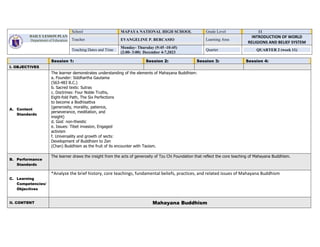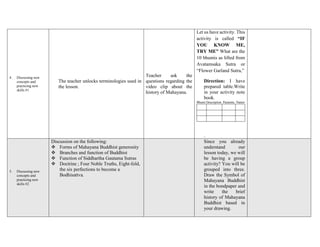The daily lesson plan summarizes Mahayana Buddhism over 4 sessions. The objectives are to analyze the history, teachings, beliefs and practices of Mahayana Buddhism including the Four Noble Truths and six perfections. Examples of generosity by Mahayana Buddhists will be discussed. Assessment includes understanding the doctrines and giving examples of generosity that reflect Buddhist teachings.














